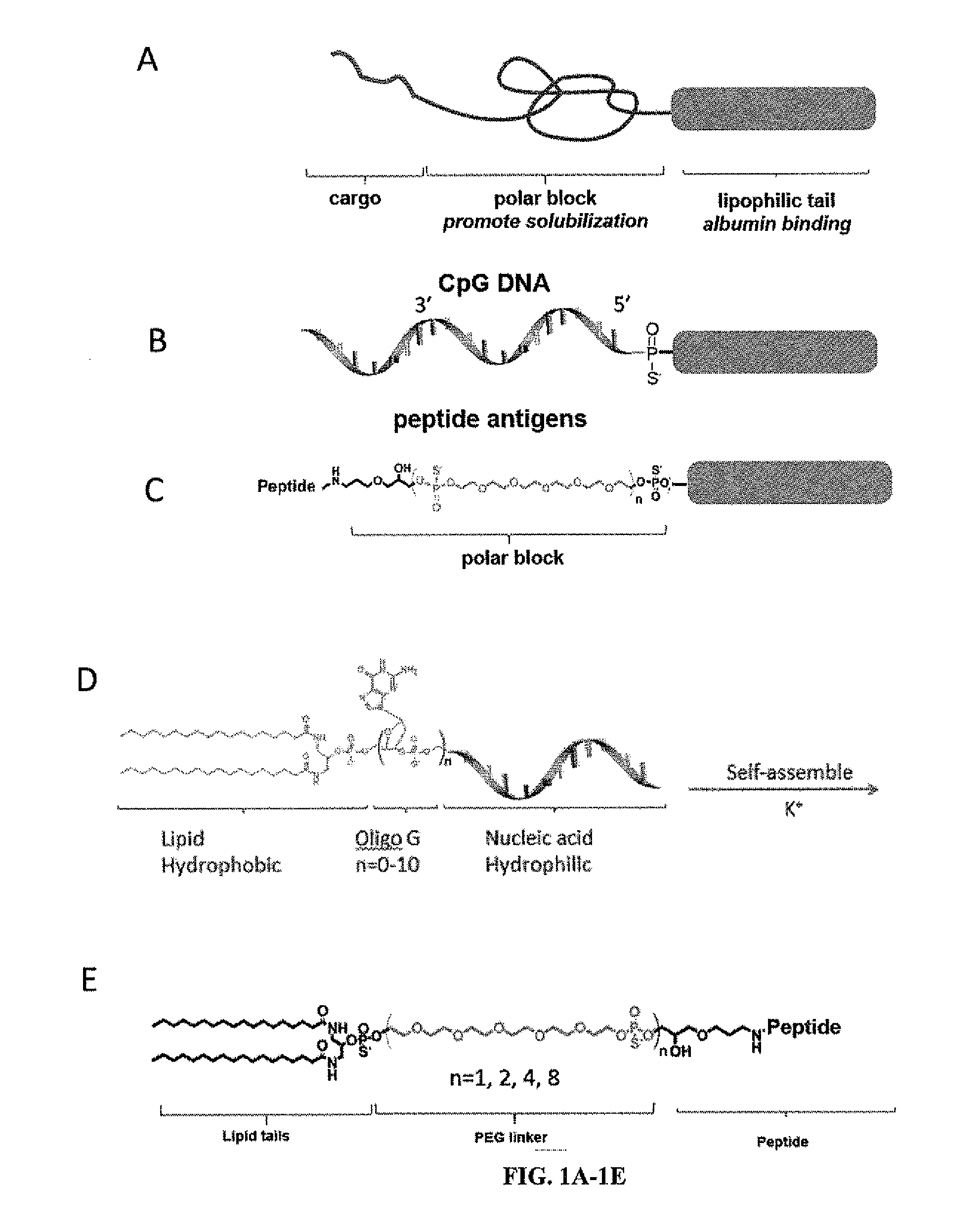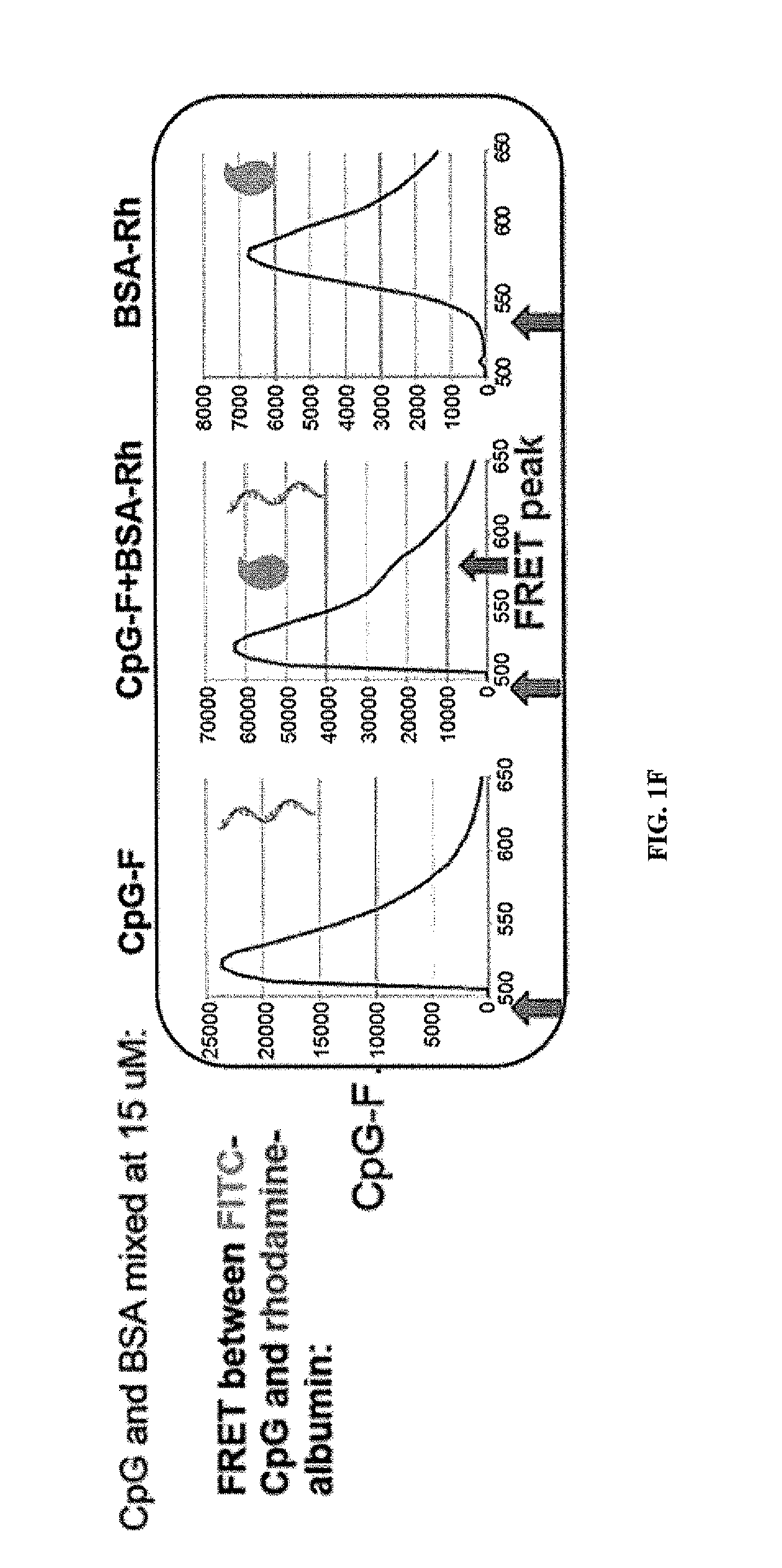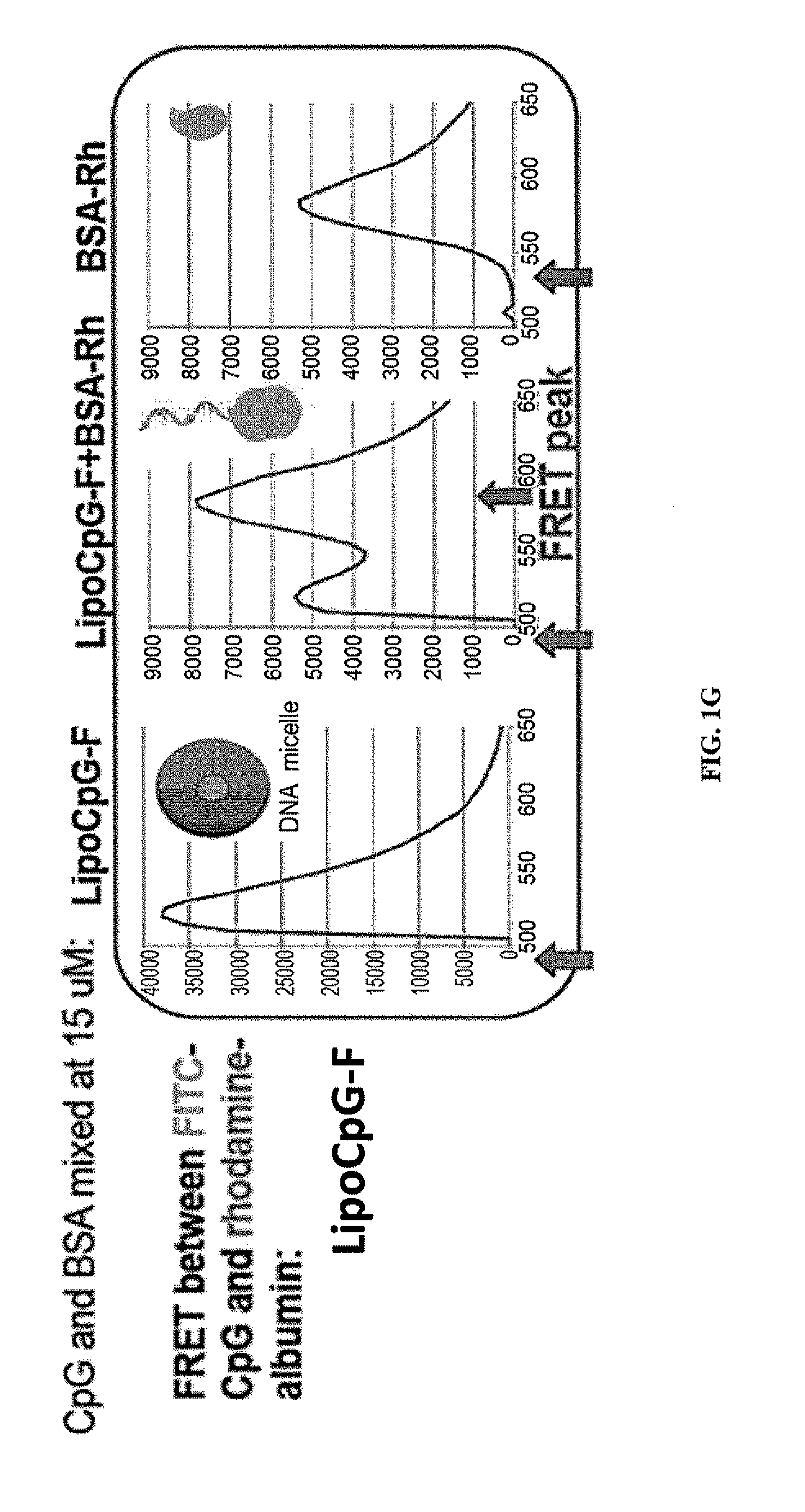Immunostimulatory compositions and methods of use thereof
a composition and immunomodulatory technology, applied in the field of immunomodulatory compositions and albumin-binding lipids, can solve the problems of inability to achieve the potency of direct injection of vaccines into lymphoid tissues, difficulty in transporting antigens/adjuvants from the injection site to secondary lymph nodes, etc., to increase the number of cd8+ t, increase the effector immune cell response, and increase the immune respons
- Summary
- Abstract
- Description
- Claims
- Application Information
AI Technical Summary
Benefits of technology
Problems solved by technology
Method used
Image
Examples
example 1
Albumin-Binding Lipo-Oligo Conjugates Accumulate in the Lymph Nodes
Materials and Methods
[0204]Oligonucleotide Synthesis
[0205]Oligonucleotides were synthesized in 1.0 micromolar scale on an automated DNA synthesizer (ABI 394, Applied Biosystems, Inc.). All DNA synthesis reagents including cholesteryl-TEG phosphoramadite and DMT-PEG-phosphoramadite were purchased from Glenres and Chemgenes and used by following manufacturer's instructions. Immunostimulatory CpG oligos employed were a type B sequence known as 1826. Synthesis of lipid phosphoramidite and solid phase conjugation was followed by previous reports. Particle size was determined by dynamic light scattering (DLS) using a 90Plus / ZetaPals particle size and ξ-potential analyzer (Brookhaven Instruments). DSPE-PEG2000-Maleimide was purchased from Laysan Bio Inc. carboxyfluorescein labeled PEG2000-DSPE were purchased from Avanti Polar lipids Inc. carboxyfluorescein labeled NHS-PEG2000 was purchased from nanocs Inc. Peptides were pur...
example 2
Stabilized Micelles Exhibit Reduce Lymph Node Targeting
Materials and Methods
[0231]Flow Cytometry
[0232]All Antibodies were purchased from BD pharmingen or ebioscience. Cells were acquired on a FACScanto flow cytometer (BD biosciences) and analyzed using flowjo software (Tree Star Inc. Ashland, Oreg.).
[0233]Intracellular Cytokine Staining (ICCS)
[0234]Cells were plated in 96-well round-bottomed plates and pulsed with minimum peptides in the presence of brefeldin A for 6 hours in complete media at 37° C. Cells were stained with anti-CD8-APC and then fixed using Cytofix (BD biosciences) according to the manufacturer's instructions. Cells were then washed and permeabilized. Intracellular staining for anti-INF-γ-PE and anti-TNF-α-FITC was then performed according to BD's protocol. FACS data were collected and analyzed as described before.
[0235]Immunohistochemistry Staining
[0236]Immunofluorescent staining was performed on 10-μm frozen sections of lymph node biopsy specimens. To reduce fadin...
example 3
Albumin “Hitchhiking” Targets Lipo-Oligo Conjugates to the Lymph Nodes
Materials and Methods
[0241]Albumin-CpG Conjugate
[0242]Mouse serum albumin (10 mg in 200 uL PBS) was added 0.79 mg BMPS (Aldrich) dissolved in 20 uL DMSO. The mixture was agitated at RT for 2 hours. The extra BMPS was removed by passing the mixture through a G-25 column. After which the solution was added 246 ug disulfide labeled fluorescein-CpG (preactivated by 20 uL 100 mM TCEP). The mixture was allowed to react overnight and extra CpG was dialysized (50K MWCO) and the absence of free CpG was confirmed by size-exclusion chlomatography.
Results
[0243]If albumin “hitchhiking” is required for optimal targeting of CpG molecules to LNs, then covalent conjugation of oligos to albumin should lead to similar LN accumulation. To test this, CpG was covalently conjugated to mouse serum albumin (MSA) and compared LN uptake of these conjugates vs. lipo-CpG or soluble CpG. Statistically significant differences were observed betw...
PUM
| Property | Measurement | Unit |
|---|---|---|
| MW | aaaaa | aaaaa |
| MW | aaaaa | aaaaa |
| diameter | aaaaa | aaaaa |
Abstract
Description
Claims
Application Information
 Login to View More
Login to View More - R&D
- Intellectual Property
- Life Sciences
- Materials
- Tech Scout
- Unparalleled Data Quality
- Higher Quality Content
- 60% Fewer Hallucinations
Browse by: Latest US Patents, China's latest patents, Technical Efficacy Thesaurus, Application Domain, Technology Topic, Popular Technical Reports.
© 2025 PatSnap. All rights reserved.Legal|Privacy policy|Modern Slavery Act Transparency Statement|Sitemap|About US| Contact US: help@patsnap.com



